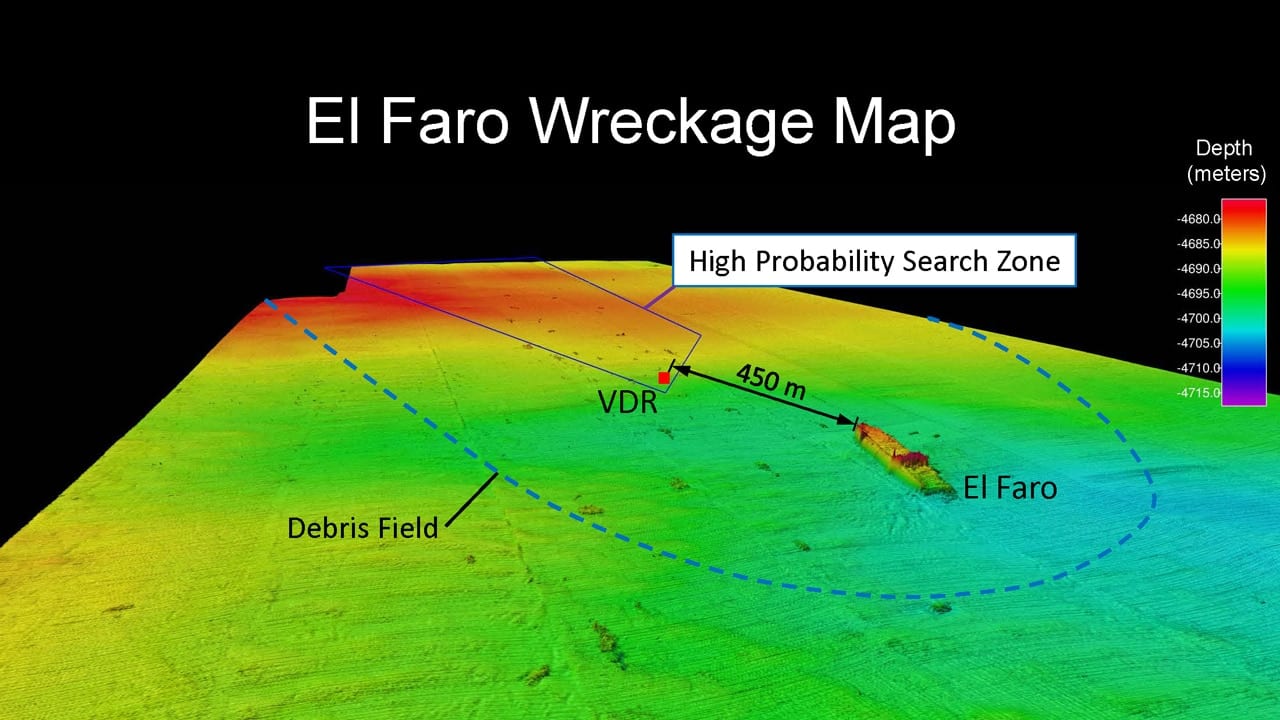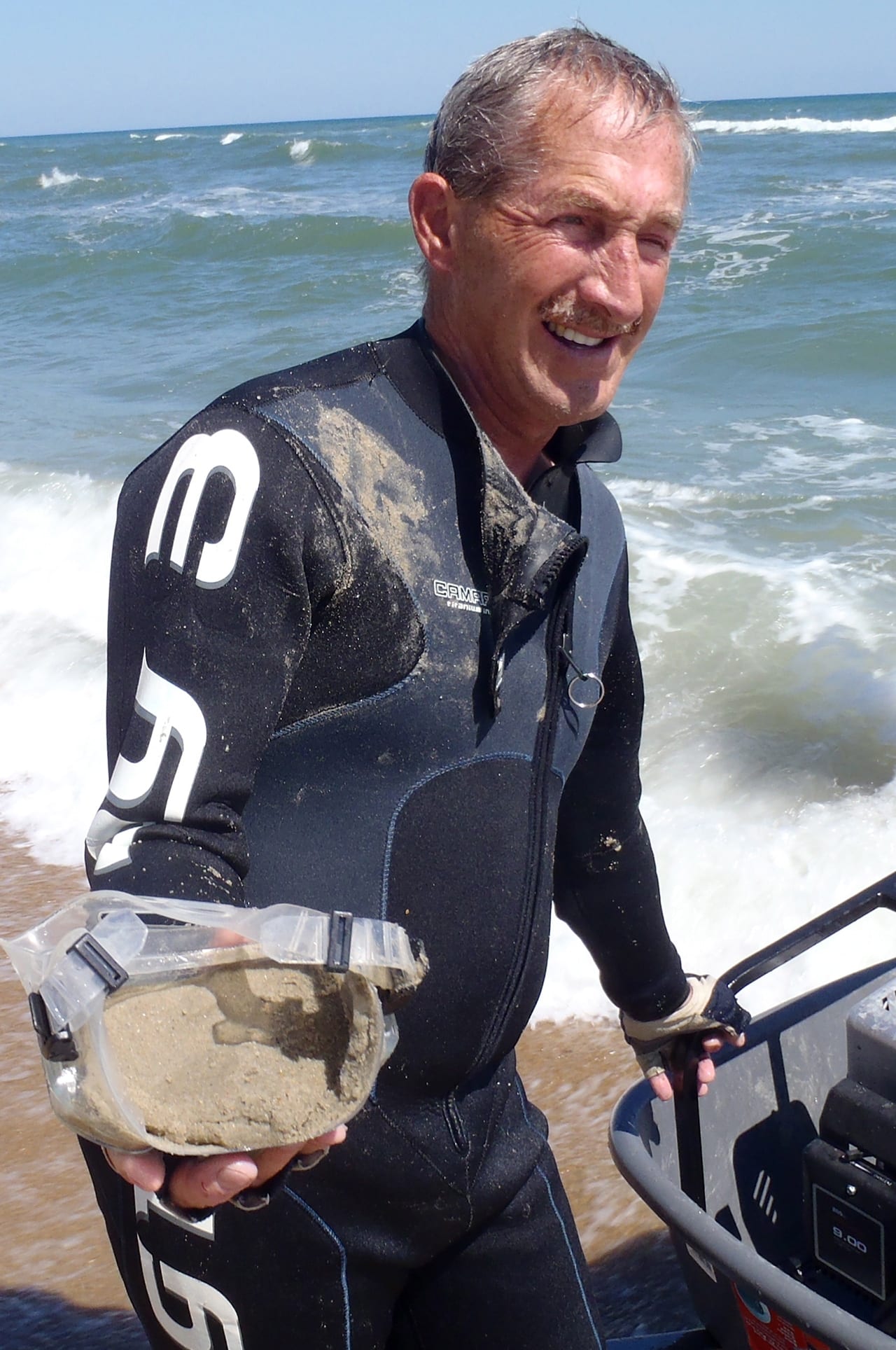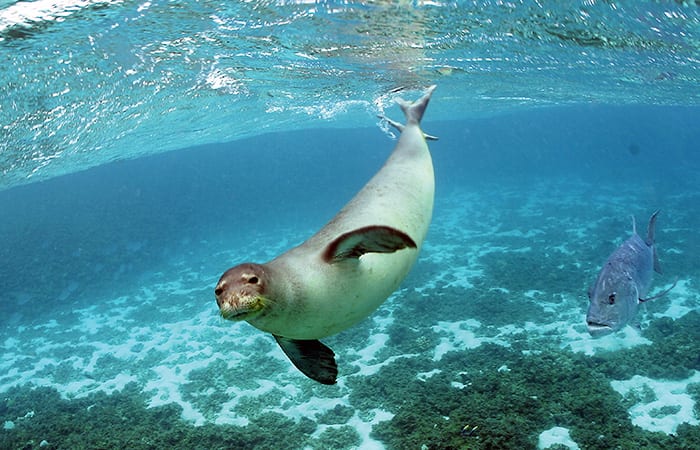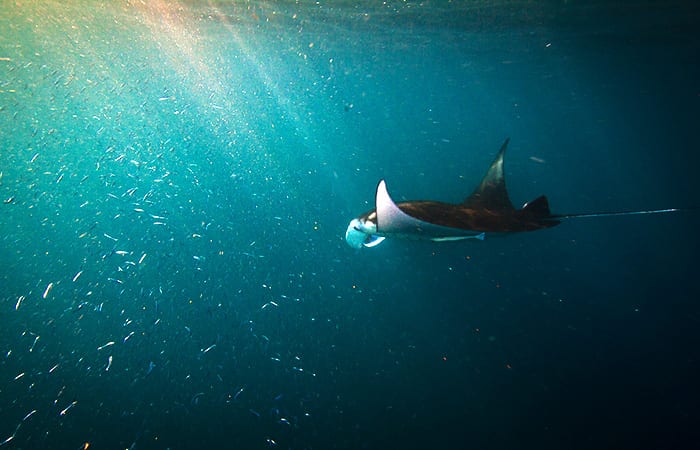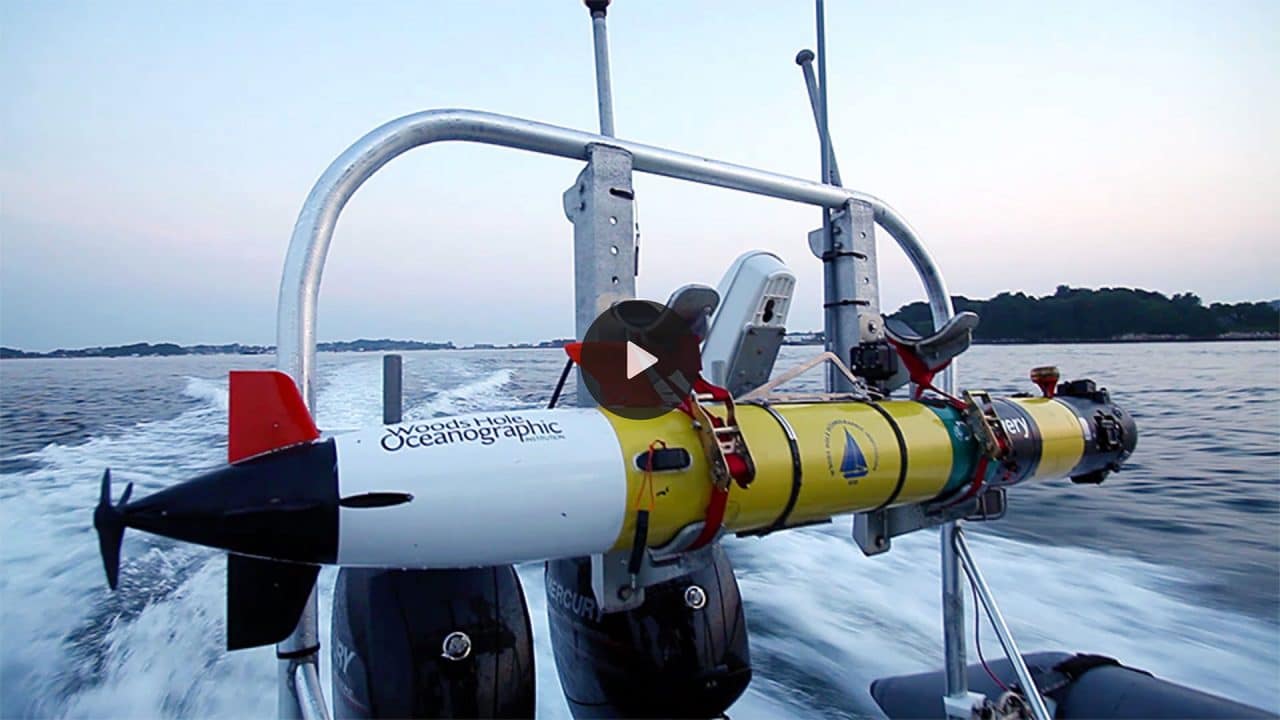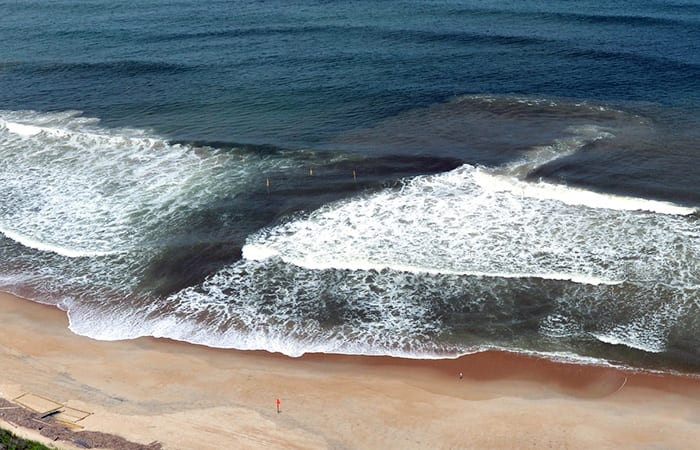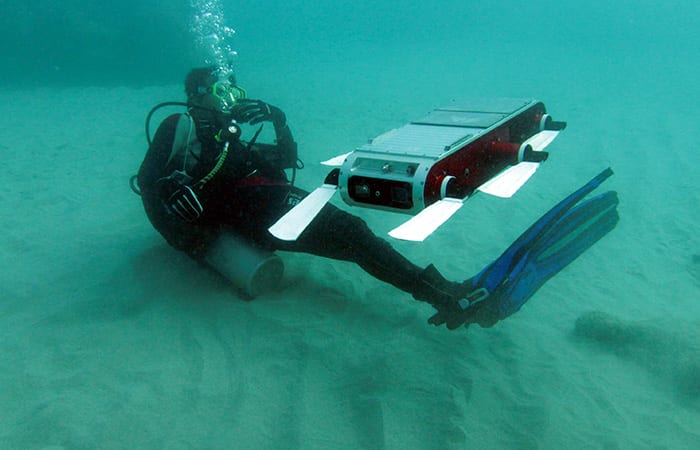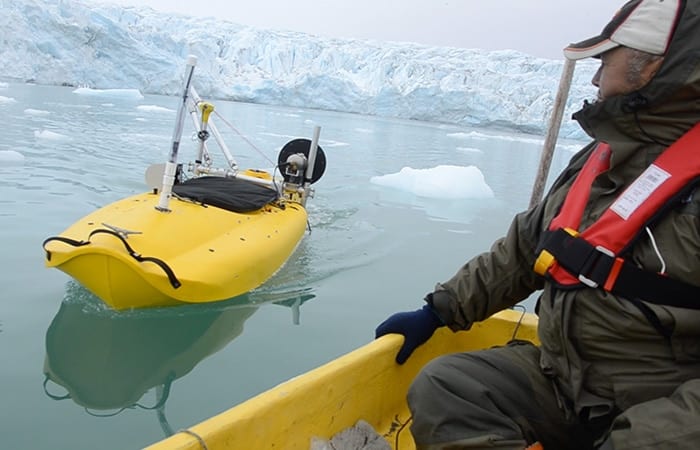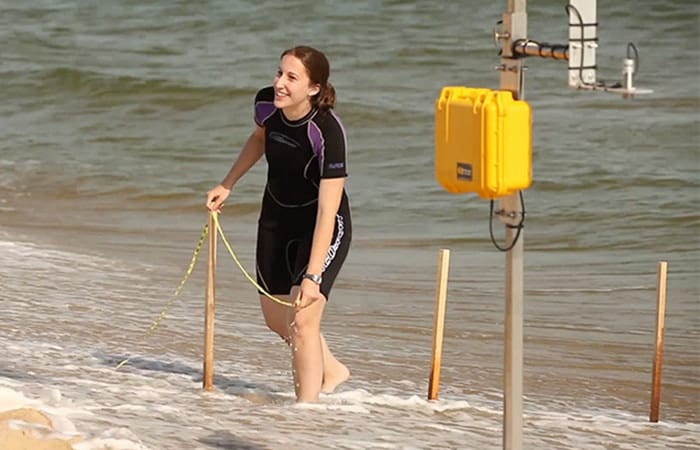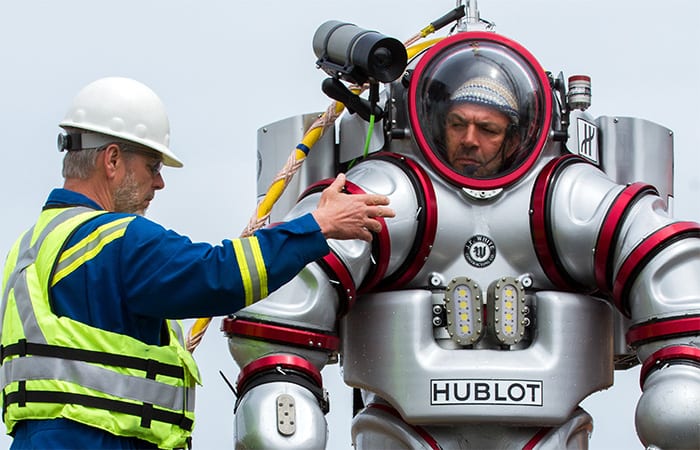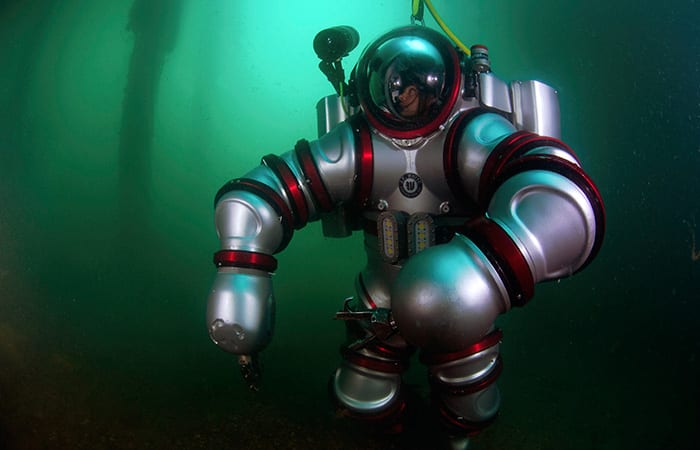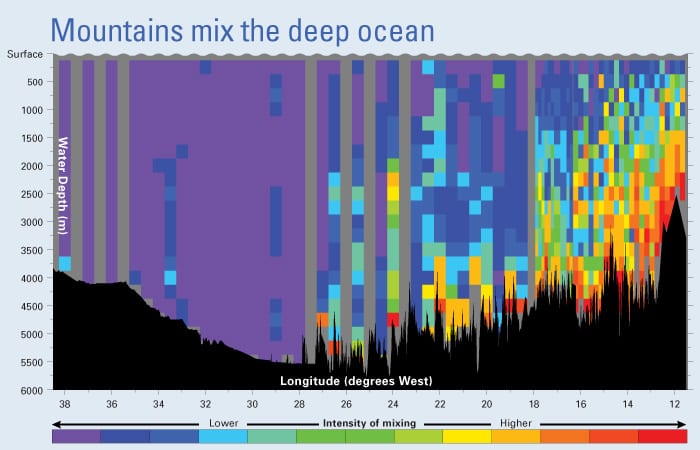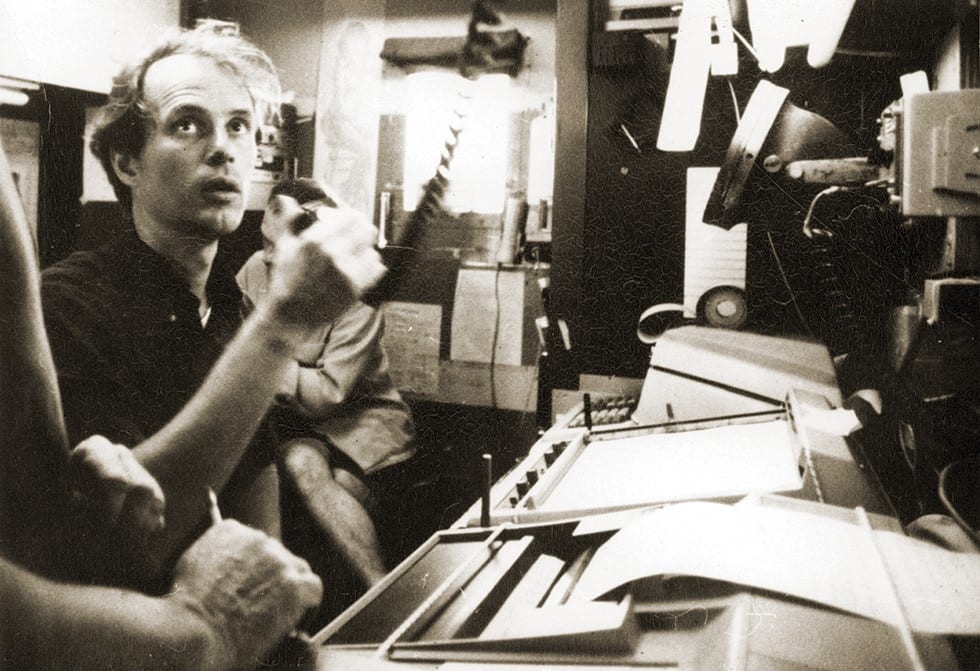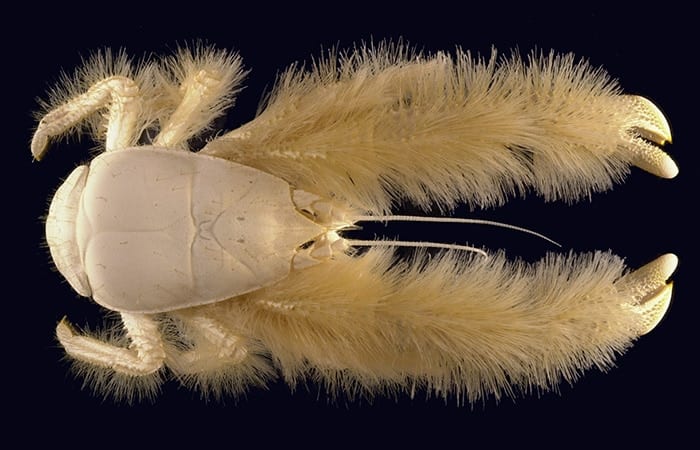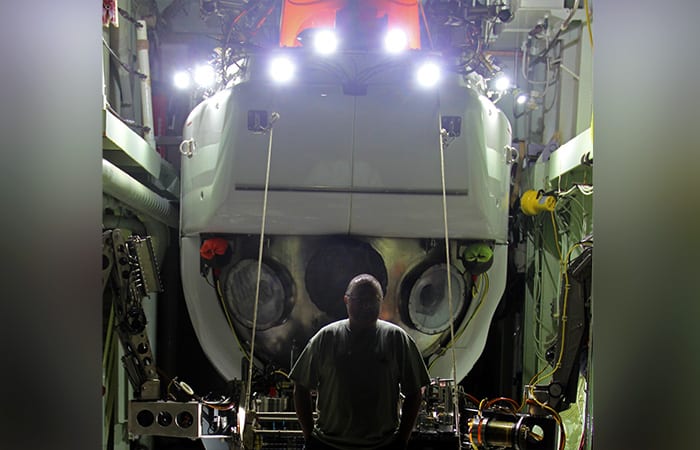Applied Ocean Physics & Engineering
WHOI Technology Used in Locating El Faro Data Recorder
Technology and vehicles developed and operated by Woods Hole Oceanographic Institution (WHOI) scientists and engineers were instrumental in assisting the NTSB in locating the voyage data recorder (VDR) of El Faro.
Read MoreSteve Elgar Named National Security Science and Engineering Faculty Fellow
Steve Elgar, a senior scientist at Woods Hole Oceanographic Institution (WHOI), has been selected as a 2016 National Security Science and Engineering Faculty Fellow (NSSEFF) by the Department of Defense.
Read MoreSeal Whiskers Inspire Marine Technology
The night approaches quickly. A harbor seal plunges into the water, diving deep as the sunlight recedes. Through the dark, turbid waters, she searches for fish. Suddenly, the whiskers on…
Read MoreEpiphany Among the Manta Rays
There’s a great need to collect ocean temperature data. And there are millions of scuba divers out there.
Read MoreTurtleCam
WHOI scientists create a robotic bloodhound to track and watch sea turtles in their inaccessible realm.
Read MoreMarine Archaeologists Excavate Greek Antikythera Shipwreck
Archaeologists excavating the famous ancient Greek shipwreck that yielded the Antikythera mechanism have recovered more than 50 items including a bronze armrest (possibly part of a throne), remains of a bone flute, fine glassware, luxury ceramics, a pawn from an ancient board game, and several elements of the ship itself.
“This shipwreck is far from exhausted,” reports project co-Director Dr. Brendan Foley, a marine archaeologist with the Woods Hole Oceanographic Institution (WHOI). “Every single dive on it delivers fabulous finds, and reveals how the ‘1 percent’ lived in the time of Caesar.”
The shipwreck dates to circa 65 B.C., and was discovered by Greek sponge fishermen in 1900 off the southwestern Aegean island of Antikythera. They salvaged 36 marble statues of mythological heroes and gods; a life-sized bronze statue of an athlete; pieces of several more bronze sculptures; scores of luxury items; and skeletal remains of crew and passengers. The wreck also relinquished fragments of the world’s first computer: the Antikythera Mechanism, a geared mechanical device that encoded the movements of the planets and stars and predicted eclipses.
The 2015 expedition is part of a long-term research program at the site, which began in 2014. It was the first scientific excavation of the wreck, and launched the first comprehensive study of all of its artifacts. During the new multi-year program the team expects to recover artifacts and ancient artwork still buried in the seafloor, and recreate the history of the ship’s exquisite cargo and its final voyage.
Read MoreThe Riddle of Rip Currents
Rip currents claim more than 100 lives in the United States each year and are the leading cause of lifeguard rescues. Scientists created a large gash in the seafloor to learn more about their complex dynamics.
Read MoreNew AUV Plankton Sampling System Deployed
Traditionally, pumps and nets are used for sampling plankton, which require sampling at predetermined stations or towing nets behind a ship, followed by visually sorting collected organisms into taxonomic groups. Samples generally combine organisms collected throughout horizontal or vertical tracks, making it impossible to detect small gradations or species-specific patterns in larval distribution.
The sampling system combines three cutting edge technologies—an adapted Suspended Particulate Rosette (SUPR) multi-sampler, a REMUS autonomous underwater vehicle equipped with sensors, and identification of organisms by DNA barcode analysis. They’ve dubbed the new system “SUPR-REMUS.”
Read MoreCarbon Dioxide Pools Discovered in Aegean Sea
The waters off Greece’s Santorini are the site of newly discovered opalescent pools forming at 250 meters depth. The interconnected series of meandering, iridescent white pools contain high concentrations of carbon dioxide (CO2) and may hold answers to questions related to deepsea carbon storage as well as provide a means of monitoring the volcano for future eruptions.
Read MoreGulf of Maine Red Tide Bloom Expected to Be Similar to Past Three Years
New England’s spring and summer red tides will be similar in extent to those of the past three years, according to the 2015 Gulf of Maine red tide seasonal forecast. The forecast is the eighth seasonal Gulf of Maine red tide forecast funded by NOAA and issued by scientists from the Woods Hole Oceanographic Institution and North Carolina State University.
The forecast is part of a larger NOAA effort to deliver ecological forecasts that support human health and well-being, coastal economies, and coastal and marine stewardship.
Red tide, a type of harmful algal bloom (HAB) caused by the alga Alexandrium fundyense, produces a toxin that can lead to paralytic shellfish poisoning, which can result in serious or even fatal illness in humans who eat contaminated shellfish. In 2005, an unusually large red tide event caused $23 million in lost shellfish sales in Massachusetts and Maine.
Read MoreResearch Submersible Alvin Completes Depth Certification to 4500 Meters
The Woods Hole Oceanographic Institution (WHOI) announces that the Human Occupied Vehicle (HOV) Alvin has achieved certification from the U. S. Naval Sea Systems Command (NAVSEA) for operations to its rated depth of 4,500 meters (approx. 2.8 miles). Two dives were conducted in the waters off Arica, Chile, on January 26-27 from the research vessel Atlantis, demonstrating vehicle performance in accordance with the specified metrics required for certification. NAVSEA representatives were on hand to monitor the process and participate in the dives.
Read MoreA Smarter Undersea Robot
Some say it is lethal to cats. WHOI scientists say it would be a boon for autonomous undersea robots.
Read MoreThe Jetyak
Oceanographers are always looking for cost-effective vehicles to help them explore risky regions. Scientists at WHOI have developed one: a robotic platform called the Jetyak.
Read MoreFrom Lab to Sea
Scientists at Woods Hole Oceanographic Institution share their field-tested experience, training graduate students on methods and instruments to collect data in the coastal ocean.
Read MoreThe Exosuit Comes Aboard
One of the ocean’s least studied places is actually the realm between 200 and 500 feet deep. This zone has resisted exploration because it’s too deep for SCUBA and not…
Read MoreHigh-tech Dives on an Ancient Wreck
When sponge divers first chanced upon the shipwreck off the Greek isle of Antikythera in 1900, they couldn’t have known that it would become the richest ancient shipwreck ever discovered.…
Read MoreREMUS SharkCam Captures Upclose Encounters with Great Whites
When a team from the Woods Hole Oceanographic Institution (WHOI) took a specially equipped REMUS SharkCam underwater vehicle to Guadalupe Island in Mexico to film great white sharks in the wild, they captured more than they bargained for.
Read MoreA Drop in the Ocean
How can you follow a wisp of water within the turbulent immensity of the ocean? Jim Ledwell figured out a way. He developed a method to inject a harmless chemical…
Read MoreAlvin‘s Fun Facts
Here are answers to some of the questions people have asked about the deep-sea research submersible in its first half-century.
Read MoreAlvin‘s Animals
From orange octopi and furry yeti crabs to the largest known anemone, pilots and scientists diving in the Alvin submersible continue to find amazing marine creatures.
Read MoreRebuilding Alvin: Chris German
From the beginning of 2011 to May 2013, Alvin, the U.S. science community’s only human-occupied submersible dedicated to deep-sea research, underwent a major overhaul and upgrade to greatly enhance its capabilities.…
Read MoreAt 50, Alvin Gets an Extreme Makeover
The deep-sea research submersible Alvin returned to service in March 2014 after undergoing an historic overhaul that significantly enhanced its capabilities.
Read MoreBringing Alvin Back on Board
Crew members of the research vessel Atlantis play crucial roles in recovering the submersible after its day on the bottom of the ocean.
Read MoreIconic Research Submersible Alvin Turns 50
We know more about the surface of other planets than we do about Earth’s ocean. And what is known about our ocean would not have been possible without the deep-sea…
Read More
